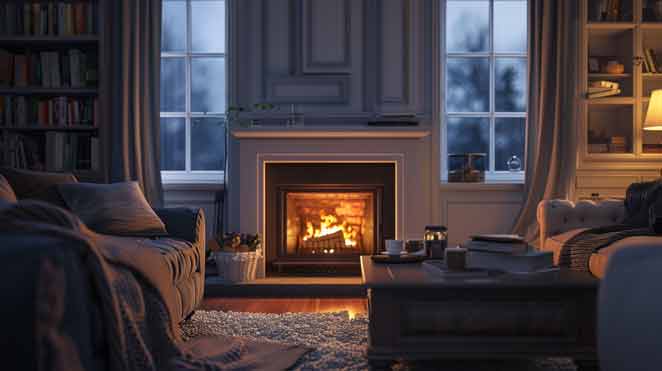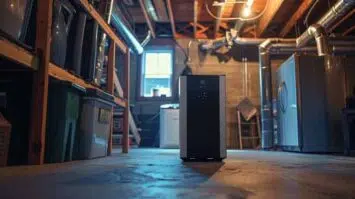Lighting a gas fireplace can transform any room into a cozy retreat, offering warmth and a welcoming ambiance with just the flick of a switch or the strike of a match. As we delve into the steps on how to light a gas fireplace, it’s essential to approach the process with safety and precision in mind.
Understanding your fireplace’s specific mechanisms, whether it features a pilot light or an electronic ignition system, is the first step toward a safe and enjoyable experience. Proper knowledge ensures not only the efficient operation of your gas fireplace but also the safety of your home and loved ones.
In this guide, we’ll walk you through the necessary preparations and detailed steps to light your gas fireplace, alongside maintenance tips to keep it running smoothly. Our aim is to equip you with the knowledge and confidence to enjoy the warmth and charm of your gas fireplace safely.
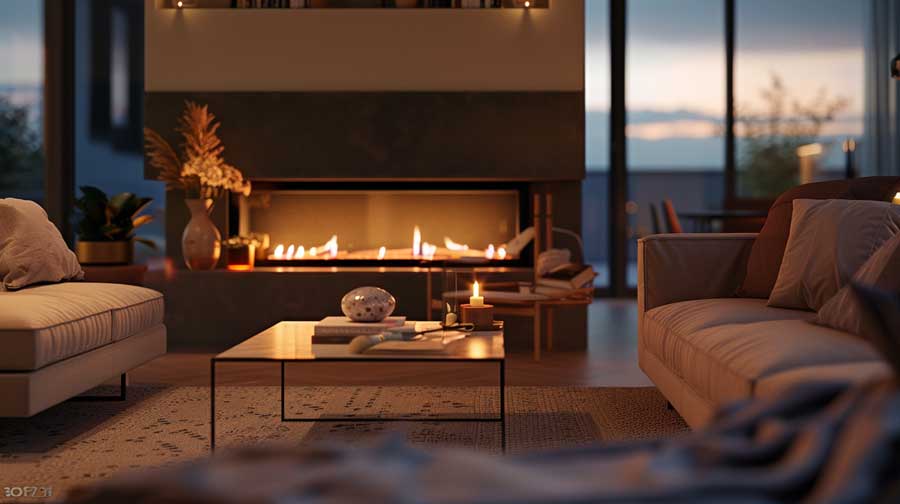
Understanding Your Gas Fireplace
Types of Gas Fireplaces
Gas fireplaces come in various models, each with unique features and operational methods. Some might have a traditional pilot light that needs manual lighting, while others are equipped with modern electronic ignition systems that ignite with ease. Knowing which type you own is crucial for proper lighting and maintenance.
Safety Precautions Before Lighting
Before attempting to light your gas fireplace, it’s important to prioritize safety. Always check for any signs of gas leaks. If you smell gas, do not proceed. Instead, evacuate the area and contact a professional. Additionally, familiarizing yourself with the manufacturer’s instructions can provide specific guidance tailored to your fireplace model. This knowledge is key to preventing accidents and ensuring a safe and enjoyable experience.

Preparing to Light Your Gas Fireplace
Tools and Materials Needed
Generally, you might need only a few tools or materials, such as long matches or a lighter, to light your gas fireplace. It’s simple, yet preparation is key.
Inspecting the Fireplace and Ventilation
Before lighting your gas fireplace, inspecting the unit and ensuring the chimney or vent is clear is essential. This step helps prevent smoke from entering the room and ensures that any combustion gases are safely expelled outside. A clean, well-ventilated fireplace is not only safer but also more efficient.
In the next sections, we will guide you through the specific steps to light both pilot light and electronic ignition gas fireplaces. With each step, remember, safety first and enjoyment will follow. Let’s keep the warmth glowing in your home with your gas fireplace, a centerpiece of comfort through the colder months.
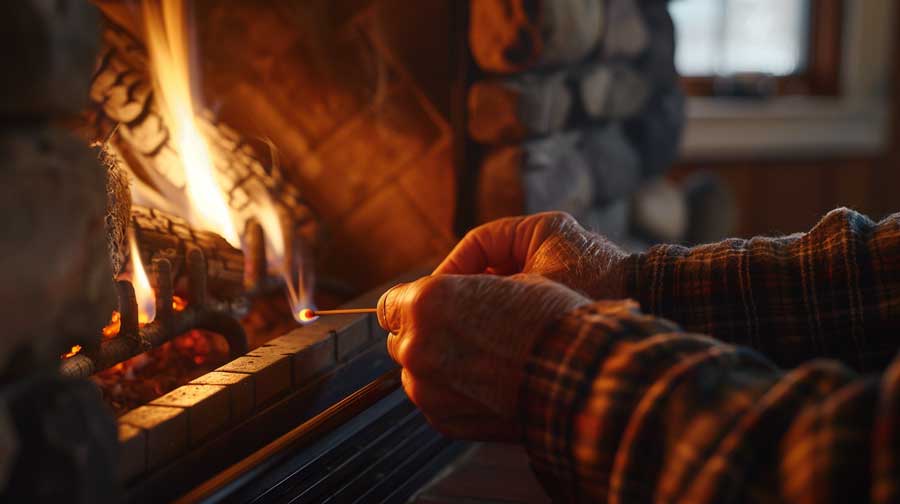
How to Light a Pilot Light Gas Fireplace
Lighting the Pilot Light
To light the pilot light of your gas fireplace, begin by ensuring the gas valve is turned off and waiting a few minutes for any residual gas to dissipate. Then, locate the pilot light assembly and turn the knob to the “pilot” position. While pressing down on the knob or button (depending on your model), use a long match or lighter to ignite the pilot light. Once the pilot light is lit, keep the button pressed for about a minute to ensure the flame stays on. Then, carefully turn the knob to the “on” position to allow gas to flow to the fireplace.
Turning On the Gas Fireplace
After the pilot light is successfully lit, turning on your gas fireplace is as simple as adjusting the main gas valve or using the switch provided with your fireplace. If your fireplace has a control panel, you might also have options for adjusting the flame height and heat output. Remember to always monitor the fireplace as it ignites to ensure it’s burning correctly and safely.
Troubleshooting Common Issues
If you encounter issues with lighting the pilot light or the fireplace not igniting, ensure the gas supply is on and there are no obstructions in the gas line. Sometimes, air trapped in the gas line can prevent ignition, requiring several attempts to light the pilot. If problems persist, consulting the manufacturer’s guide or contacting a professional is advisable for safety and to prevent damage to your fireplace.
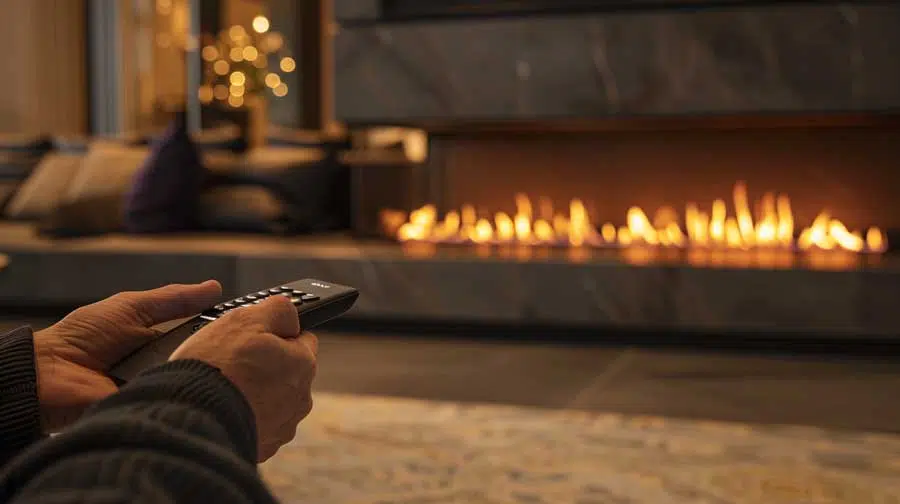
How to Light an Electronic Ignition Gas Fireplace
Engaging the Electronic Ignition
Electronic ignition gas fireplaces simplify the lighting process. To activate your fireplace, ensure the gas valve is open and then use the remote control or a button on the fireplace to ignite the burner directly. These systems often do not require a pilot light, making them convenient and energy-efficient.
Adjusting the Flame and Using the Features
Modern gas fireplaces with electronic ignition often come with features that allow you to adjust the flame height and control the heat output remotely. Experimenting with these settings can help you find the perfect ambiance and temperature for your space. Always refer to your fireplace’s manual for guidance on using these features effectively and safely.
In the next section, we will cover routine maintenance tips and when it’s time to call in a professional, ensuring your gas fireplace continues to provide warmth and comfort safely for years to come.
Maintaining Your Gas Fireplace
Routine Maintenance Tips
Keeping your gas fireplace in top condition requires regular maintenance. Annually, have a certified technician inspect and clean the fireplace and ventilation system to ensure everything is in safe working order. This checkup should include cleaning the glass, checking for gas leaks, and ensuring the vent is clear of obstructions. Regularly removing dust and debris from the fireplace can also prevent potential issues.
When to Call a Professional
While many aspects of gas fireplace maintenance can be handled by the homeowner, such as cleaning the exterior and checking the batteries in a remote control, certain situations require professional attention. If you notice unusual odors, sounds, or if the fireplace isn’t heating efficiently, it’s time to call a technician. Also, if the pilot light frequently goes out or you’re unable to light the fireplace, professional diagnostics and repair will ensure your safety and the longevity of your fireplace.
Safety Tips and Best Practices
Ensuring Ventilation
Proper ventilation is crucial when operating your gas fireplace. Always make sure the chimney or venting system is clear and functioning correctly to prevent the buildup of harmful gases, like carbon monoxide, inside your home. Opening a window slightly while the fireplace is in use can also help maintain good air quality.
Carbon Monoxide Detectors and Fire Safety
Installing carbon monoxide detectors near your gas fireplace and in sleeping areas provides an additional safety layer. Regularly test these detectors and replace batteries as necessary. Keep a fire extinguisher accessible in your home, and familiarize yourself with how to use it in an emergency.

FAQs
Conclusion
Lighting and enjoying a gas fireplace can significantly enhance the comfort and ambiance of your home. By following the step-by-step guides provided, you can safely light both pilot light and electronic ignition gas fireplaces. Remember, regular maintenance and understanding when to call in professionals are key to the safe operation of your gas fireplace. Enjoy the warmth and charm of your fireplace, knowing you’ve taken the right steps to ensure a safe and cozy environment for your family.

